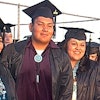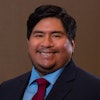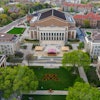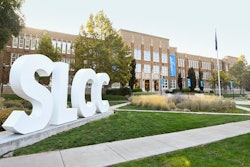LAPWAI – From a single high-tech classroom, American Indian students like 43-year-old Shelly Higheagle are taking college classes for the first time.
It doesn’t resemble your typical college campus from the outside. The distance learning center for Northwest Indian College doesn’t boast a prominent sign. It sits amongst modular buildings that house the tribe’s Head Start center, where a much younger student population goes to class each day.
But inside, Higheagle sits with a tape recorder in the front row, taking notes during instructor Phill Allen’s Native American studies class.
“I wish I would have got to do this a long time ago,” said Higheagle, who started taking classes part-time about a month ago with her 21-year-old daughter Nicole.
Six people attend this day’s class from Lapwai, and about 20 are enrolled and tuning in via television conference from five other distance-learning campuses around the Northwest. The Bellingham, Wash., school has a main campus on the Lummi Indian Reservation.
Classes at Lapwai began with 17 students in 2001, as a place for tribal employees to advance their education, Allen said. This quarter Allen said the Lapwai and Kamiah centers cite an enrollment of about 40, double the numbers of last spring.
The center’s one classroom also serves as office, computer lab and admissions center. Another classroom inside the Wa A Yas Community Center in Kamiah serves the same purpose.




















